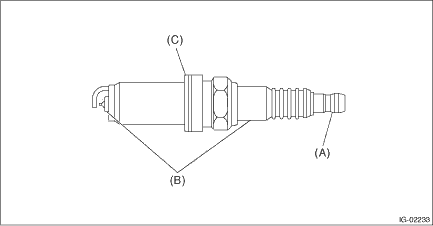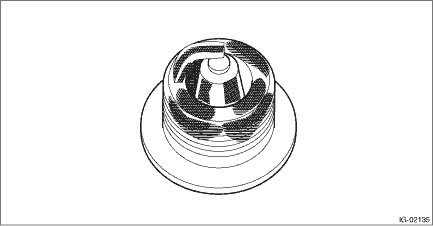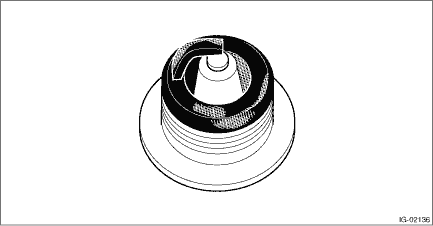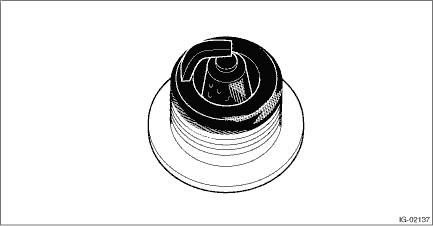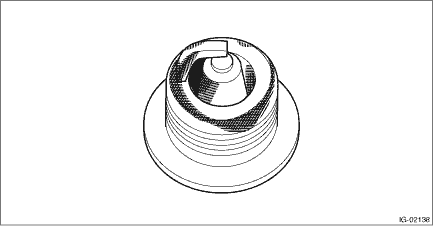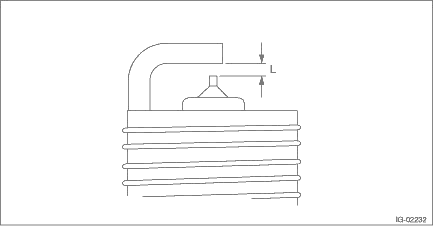Subaru Legacy BN/BS (2015-2019) Service Manual: Inspection
1. Check the spark plug for abnormalities. If defective, replace the spark plug.
2. Check the spark plug electrode and condition of the insulator. If abnormal, check and repair the cause and replace the spark plug. (1) Normal: Brown to grayish-tan deposits and slight electrode wear indicate correct spark plug heat range.
(2) Carbon fouled: Dry fluffy carbon deposits on the insulator and electrode are mostly caused by slow-speed driving in town, weak ignition, too rich fuel mixture, etc.
(3) Oil fouled: Wet black deposits show oil entrance into combustion chamber through worn piston rings or increased clearance between valve guides and valve stems.
(4) Overheating: A white or light gray insulator with black or brown spots and bluish burnt electrodes indicate engine overheating, wrong selection of fuel, or loose spark plugs.
3. Using a nylon brush, etc., clean and remove the carbon or oxide deposits from the spark plug. If deposits are too stubborn, replace the spark plugs. After cleaning the spark plugs, check the spark plug gap “L” using a gap gauge. If it is not within the standard, replace the spark plug. NOTE: • Never use a plug cleaner. • Do not use a metal brush as it may damage the electrode area. Spark plug gap L: Standard 1.0 — 1.1 mm (0.039 — 0.043 in)
|
 Removal
Removal
Spark plug:Refer to “SPECIFICATION” for spark plug. General Description > SPECIFICATION1. RH SIDE1. Remove the collector cover.(1) Carefully pull up the rear of collector cover at two pos ...
 Installation
Installation
1. RH SIDE1. Install the spark plugs using a spark plug socket.Tightening torque:21 N·m (2.1 kgf-m, 15.5 ft-lb)(A)Ratchet handle(B)Extension bar(C)Universal joint(D)Spark plug socket 2. Inst ...
Other materials:
Disassembly
CAUTION:Use a dry clean cloth so that no grease or water adheres to the glass portion of the bulb.1. HIGH BEAM BULB1. Disconnect the connector.2. Rotate in the direction of arrow shown in the figure to remove the high beam bulb.2. LOW BEAM BULB (HALOGEN TYPE)1. Disconnect the connector.2. Rotate in ...

